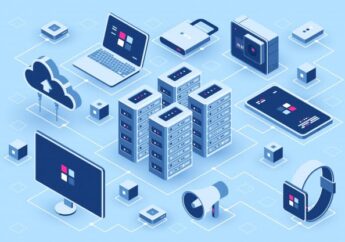Measuring Success: Key Performance Indicators For Full Stack Development Teams
by Mony Shah Technology Published on: 25 November 2023 Last Updated on: 05 December 2023

In the world of making software, it’s important to know if your team is doing well. But how do you measure that? That’s where Key Performance Indicators (KPIs) come in. They’re like scorecards that help your team understand how they’re doing and where they can get better.
For Full Stack Development teams, monitoring KPIs is especially crucial to ensure efficiency and success in delivering comprehensive solutions. From assessing code quality to evaluating project timelines, these indicators provide valuable insights into the team’s performance.
Whether you’re looking to hire a full stack developer in India or elsewhere, understanding and implementing relevant KPIs can streamline the development process, enhance collaboration, and ultimately contribute to the success of your software projects.
What Are Full Software Development KPIs?
Performance metrics, commonly known as Key Performance Indicators (KPIs), serve as measurable criteria allowing organizations to evaluate the efficiency and effectiveness of their operational processes. Specifically, within the field of full-stack development, KPIs play a pivotal role in monitoring advancement, pinpointing obstacles, and safeguarding the overall triumph of the development lifecycle.
Benefits of Choosing the Right Software Development KPIs
KPIs are quantifiable metrics that allow teams to gauge their performance against defined objectives. These metrics must be checked during interviews when hiring developers in India or anywhere across the globe to select the best candidate. For Full Stack Development teams, KPIs serve as a valuable tool to:
- KPIs act as navigational beacons, guiding teams through the intricate development process and ensuring that each phase is executed with precision.
- It offers a glimpse into the current status of the development team in the specific areas that may need attention or improvement.
- Key Performance Indicators (KPIs) promote a proactive approach, allowing teams to synchronize their actions with the overall objectives of the project.
- Continuous improvement is at the core of software development, and KPIs unveil areas for enhancement by pinpointing issues and inefficiencies.
- Efficiency is paramount, and KPIs streamline workflows by identifying bottlenecks and optimizing processes.
- By providing a structured evaluation framework, KPIs empower teams to exercise better control over their workflows.
- KPIs offer insights that extend beyond development, aiding teams in aligning their efforts with broader business objectives.
- Through continuous monitoring and adjustment, KPIs contribute to the efficient allocation of resources, maximizing returns on investment.
Top 10 Key Performance Indicators for Full Stack Development Teams
Picking the right things to measure is really important for making sure your project goes well. If you choose indicators that match what your customer wants, it helps you keep an eye on how things are going. This is key for smoothly moving from the start of the project to launching the final product.
So, here are the top 10 things to measure for software development that you should consider.
1. Sprint Burndown
Sprint burndown charts track the completion of user stories or tasks within a sprint. This KPI provides a visual representation of work completed versus work remaining, allowing teams to adapt and optimize their efforts during the sprint.
2. Velocity
It measures the amount of work a team can complete in a given iteration. It helps in predicting future project timelines and assists teams in setting realistic goals for each sprint.
3. Release Burndown
Similar to sprint burndown, release burndown charts track the completion of work over the entire project timeline. This KPI helps in monitoring progress toward the ultimate goal and ensures that the team stays on track to meet deadlines.
4. Cumulative Flow
It diagrams visualize the flow of work through different stages of development. By highlighting bottlenecks and areas of congestion, this KPI aids in optimizing the workflow for increased efficiency.
5. Cycle Time
Cycle time measures the time it takes for a task to move from initiation to completion. This KPI is crucial for identifying delays and streamlining processes to enhance overall project speed.
6. Code Coverage
Code coverage assesses the percentage of code covered by automated tests. It is a critical metric for ensuring the reliability and maintainability of the codebase.
7. Flow Efficiency
It measures the time a task spends actively being worked on versus the total time it takes to complete. This helps in identifying and reducing idle time in the development process.
8. Code Simplicity
Code simplicity evaluates the complexity of the codebase. Creating code that is straightforward and easy to comprehend enhances its maintainability and reduces the likelihood of errors, thereby fostering the sustained success of the project.
9. Code Stability
Code stability measures the frequency of code changes and updates. A stable codebase is indicative of a well-structured and reliable application.
10. Code Churn
Code churn quantifies the frequency of code changes and rework. High code churn may indicate underlying issues in the development process, such as unclear requirements or inadequate planning.
Related: All The Things You Need To Know About Web Development
Challenges in Measuring Full Stack Development Team Success
Here are some of the challenges in measuring the KPI’s Full Stack Development Team:
A. Subjectivity in Some Metrics
Certain KPIs, such as code simplicity and stability, can be subjective, requiring teams to establish clear criteria for evaluation.
B. Balancing Technical and Business Metrics
Striking a balance between technical metrics (e.g., code coverage) and business metrics (e.g., ROI) is crucial for holistic performance evaluation.
C. Adapting KPIs to Changing Project Requirements
In dynamic development environments, adapting KPIs to evolving project requirements is essential to ensure relevance and effectiveness.
Best Practices for Implementing KPIs in Full Stack Development Teams
The top practices to overcome KPI measure challenges-
A. Set Clear Goals
Ensure that your team is clear about the objectives associated with each Key Performance Indicator (KPI). This helps everyone move in the same direction.
B. Teamwork Matters
Get everyone in your team involved. They might see things you don’t and can help find solutions.
C. Keep Checking and Changing
Consistently monitor your team’s performance using Key Performance Indicators (KPIs) and make adjustments as necessary to ensure ongoing improvement.
In Bottom Line
In the realm of software development, success is an ongoing journey, not just a destination. Key Performance Indicators (KPIs) play a vital role in guiding your Full Stack Development team on this journey. By choosing the right KPIs, your team can assess and improve their performance, adapting to the evolving technology landscape. If you’re looking to strengthen your team, consider hiring a full-stack developer in India, tapping into the rich pool of skills and expertise available.
Read Also:







































































































